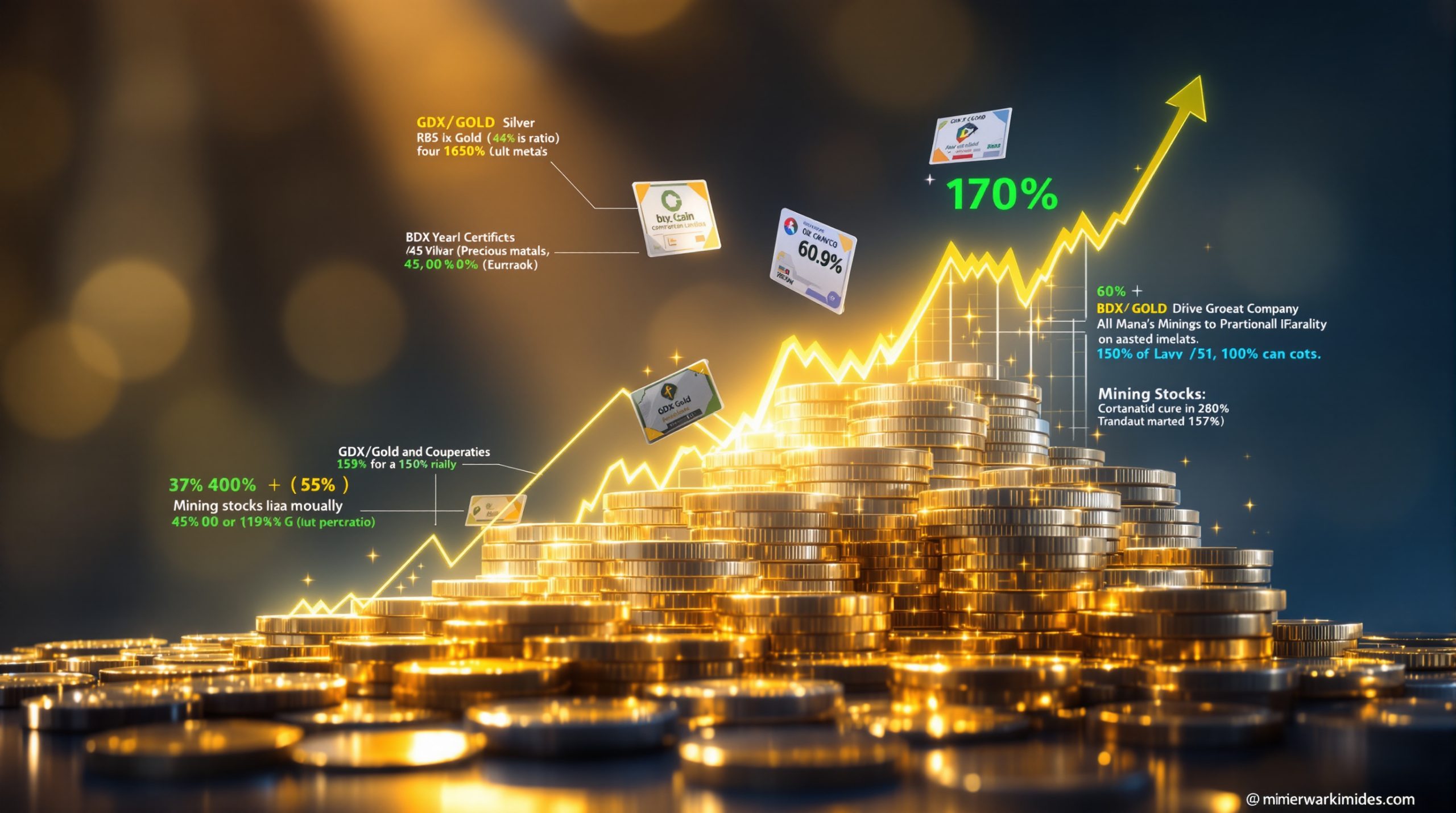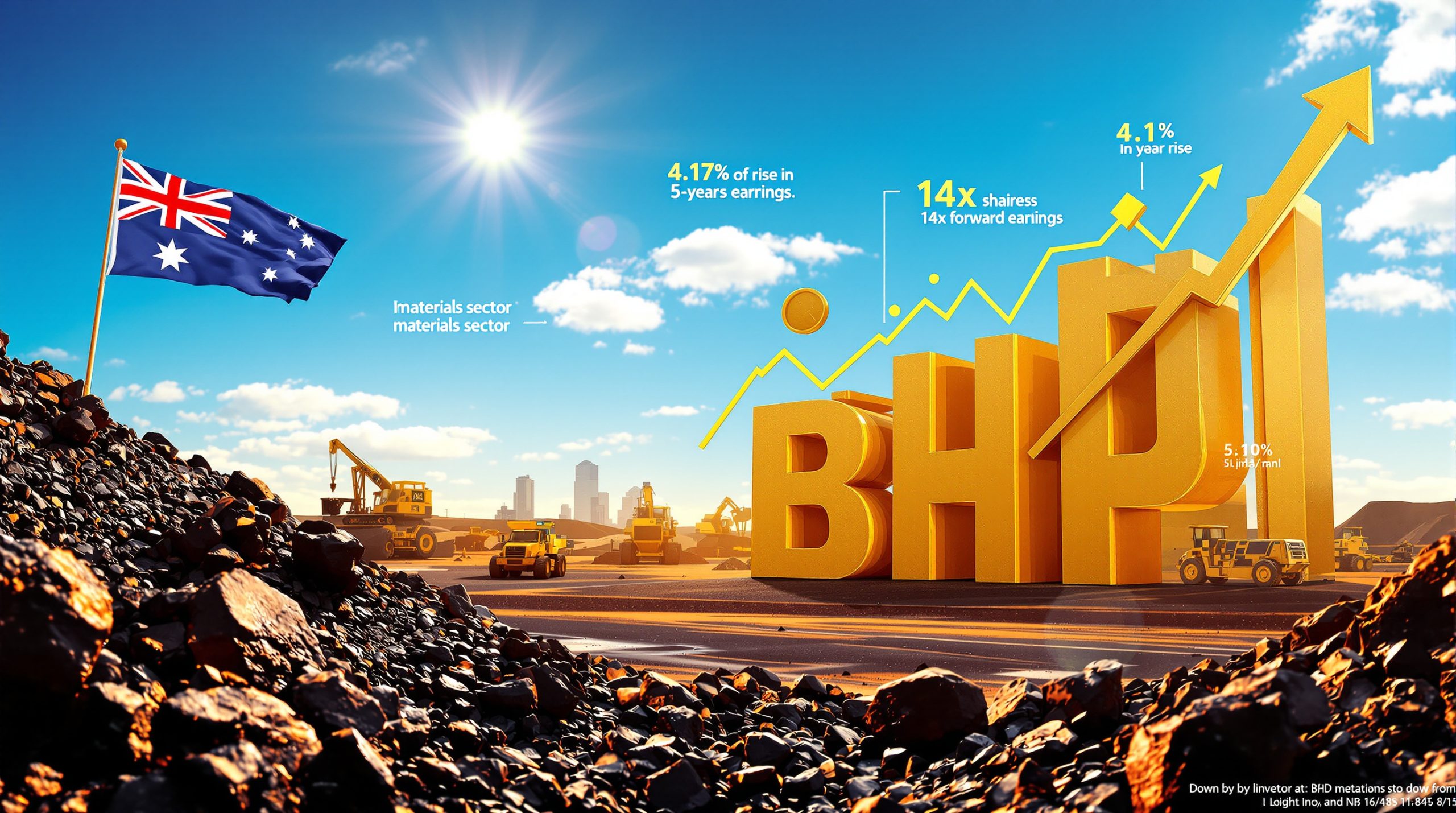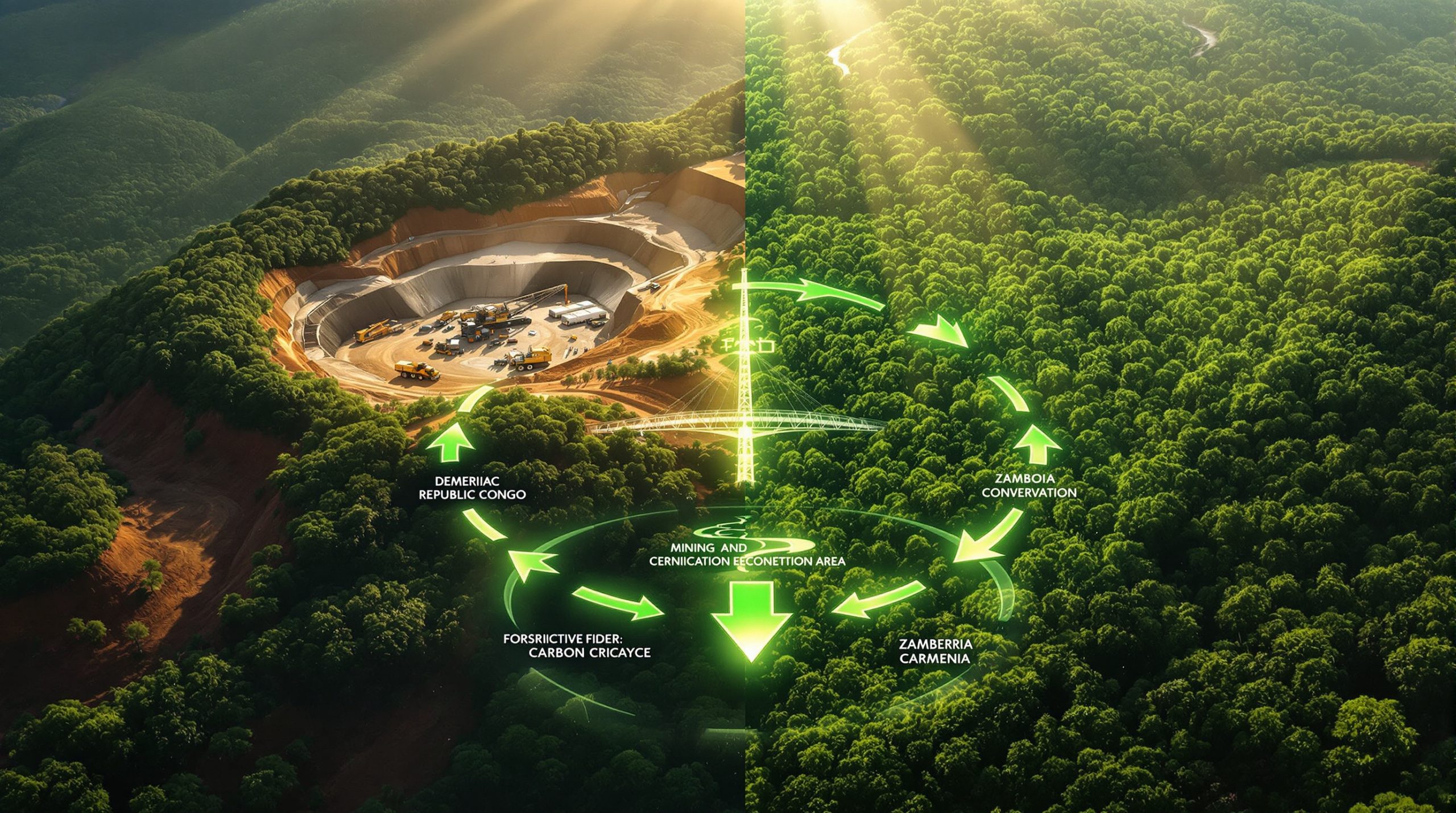The Global Scramble for Copper: Supply Shortages and Market Dynamics
The global copper market is at a critical inflection point. Unprecedented demand driven by the worldwide energy transition is colliding with significant supply constraints, creating what industry insiders are calling a "perfect storm" for this essential metal. Copper's exceptional electrical conductivity makes it irreplaceable in renewable energy systems, electric vehicles, and power infrastructure – positioning it at the heart of global decarbonization efforts.
As nations rush to secure copper supplies, a complex landscape of production challenges, geopolitical tensions, and market pressures is emerging. This deepening supply-demand imbalance has profound implications for governments, industries, and investors alike.
Understanding the Copper Supply Crisis
The copper industry faces a fundamental mismatch between rapidly accelerating demand and constrained supply growth. This essential metal, often called "the metal of electrification," is experiencing demand pressure from multiple sectors simultaneously – renewable energy, electric vehicles, grid modernization, and traditional industrial uses.
Global copper consumption is projected to nearly double by 2035, reaching approximately 50 million metric tons annually. This surge comes as existing mines face declining ore grades, increased production costs, and more complex regulatory environments.
The supply crisis is further complicated by long development timelines for new projects. Unlike other commodities that can quickly adjust production levels, copper mines typically require 10-20 years from discovery to production, creating a significant lag in supply response to price signals.
Why Is Copper Facing a Supply Shortage?
The emerging copper shortage stems from converging factors: accelerating demand from the global energy transition, inadequate investment in new production capacity, and the inherent challenges of copper mining and processing.
Net Zero Transition Driving Unprecedented Demand
The global push toward net-zero emissions is fundamentally reshaping copper demand patterns. Industry experts estimate that around US$2 trillion of investment in copper mines will be required to meet net-zero targets. This massive capital requirement reflects the metal's crucial role in electrification technologies.
Even more striking is the production gap: approximately 61 new copper mines need to be brought into production over the next five to six years just to satisfy projected demand. This represents an unprecedented scale of development in an industry where new projects typically take a decade or more to advance from discovery to production.
Electric vehicles alone represent a substantial demand driver, with each EV requiring 2.5-3.5 times more copper than conventional vehicles. Add to this the copper intensity of solar and wind power systems, which use 2-5 times more copper per megawatt than fossil fuel generation.
Production Challenges for New Projects
Developing new copper projects faces multiple obstacles that constrain supply growth:
- Declining ore grades: New copper discoveries typically show lower metal content (often below 0.5%) compared to historic mines (1-2%), requiring more extensive processing to extract the same amount of metal
- Extended development timelines: The period from discovery to production now averages 10-20+ years due to more complex permitting, environmental reviews, and community consultations
- Massive capital requirements: Modern copper mines frequently require multi-billion-dollar investments before producing their first pound of metal
- Technical complexity: Processing lower-grade ores requires more sophisticated technology and higher energy inputs, increasing both capital and operating costs
"New discoveries are typically low-grade porphyries that can cost billions and billions of dollars to bring on and take 10 to 20-plus years from discovery to production. That's where brownfield projects have the benefit, because we can be in production within three years."
These constraints create a substantial barrier to supply growth precisely when rising copper demand is accelerating.
How Are Copper Prices Responding to Market Pressures?
The copper market is showing unprecedented pricing dynamics as regional markets respond differently to supply constraints and trade policies.
Regional Price Divergence
A remarkable price bifurcation is emerging between the world's two primary copper trading venues – the Commodity Exchange (COMEX) in the United States and the London Metal Exchange (LME). This divergence, expected to intensify through 2025, reflects differing regional supply-demand balances and trade policy impacts.
Morgan Stanley has recently adjusted its COMEX copper forecasts upward:
- September quarter 2025: US$5.60 per pound (10% increase)
- December quarter 2025: US$5.94 per pound (13% increase)
- March quarter 2026: US$6.25 per pound (17% increase)
In contrast, LME copper is projected at US$4.31 per pound for the September quarter 2025, falling to US$4.24 per pound in the December quarter – creating a significant premium for US copper prices.
This widening gap partly reflects US importers accelerating purchases ahead of potential tariff implementation, creating temporary supply pressure in domestic markets.
Impact of Trade Policies
The price divergence is further amplified by evolving trade policies. The US has implemented or proposed 50% tariffs on copper semi-finished goods and copper-intensive derivative products, though refined copper remains exempt until 2027.
These trade measures create significant market distortions and potential cost implications:
- Domestic refining constraints: The US lacks sufficient domestic refining capacity to meet its copper needs, making import exemptions critical
- Supply chain disruptions: Manufacturers dependent on imported copper components face significant cost increases
- Consumer price impacts: Higher copper input costs will likely flow through to consumer products containing electrical components
- Investment incentives: Price premiums could accelerate investment in domestic US copper production, though long development timelines mean limited short-term impact
As one industry executive noted: "Let's not mess around – another name for a tariff is an import tax, and if they have to bring in the copper for their own needs, that's going to be passed on to consumers."
The tariff impact on copper markets continues to evolve as trade policies develop further.
Which Companies Are Positioning for the Copper Boom?
The anticipated copper supply shortage is driving strategic repositioning across the mining sector, with major players increasing their exposure to the metal through both internal development and acquisitions.
Major Mining Companies Expanding Copper Exposure
Established mining companies are rapidly pivoting toward copper-focused strategies:
- Evolution Mining: Currently derives 25-30% of revenue from copper via its Ernest Henry and Northparkes mines in Australia, with plans to potentially increase this to 40% of their portfolio
- BHP and Rio Tinto: Prioritizing copper in their growth strategies, with both companies actively seeking acquisition opportunities
- Freeport-McMoRan: Accelerating brownfield expansion projects at existing operations
- Anglo American: Defending against takeover attempts partly based on the value of its copper assets
These strategic shifts reflect a fundamental reassessment of copper's importance within diversified mining portfolios. Companies are adjusting their acquisition criteria, including lowering production thresholds for target assets and accepting longer payback periods to secure quality copper resources.
Recent Strategic Acquisitions and Partnerships
The past year has seen remarkable transaction activity in the copper space:
- Hudbay Minerals and Mitsubishi Corporation: Formed a US$600 million partnership with Mitsubishi acquiring a 30% interest in Hudbay's fully permitted Copper World project in Arizona
- Deal valuation: The transaction implied a US$1.4 billion valuation for Copper World, approximately 1.2 times analyst estimates of US$1.2 billion
- Harmony Gold Mining: Completed a US$1.2 billion takeover of MAC Copper, significantly expanding its copper portfolio
- Competitive bidding wars: The contest between Kinterra Capital and Central Asia Metals for US developer New World Resources demonstrated the premium valuations copper assets now command
These transactions highlight not only rising valuations but also the increasingly global nature of copper investment insights, with Asian, North American, and European companies all actively pursuing quality assets.
What Makes Brownfield Projects Attractive in the Current Market?
As the industry grapples with lengthy development timelines for new mines, brownfield projects – those with existing infrastructure and historical development – have become particularly valuable.
Case Study: Accelerated Development Timelines
Brownfield projects offer multiple advantages in the current market environment:
- Infrastructure value: Pre-existing infrastructure at brownfield sites can represent hundreds of millions in value – in some cases A$250 million or more – reducing capital requirements
- Accelerated timelines: Brownfield developments can often achieve production within 3 years versus 10-20+ years for greenfield projects
- Resource certainty: Many brownfield sites have extensive historical drilling and metallurgical testing, reducing geological risk
- Permitting advantages: Sites with previous mining activity often face fewer regulatory hurdles than pristine areas
The dramatic timeline advantage is particularly crucial given current market projections. A project that can enter production within 3 years will benefit from the anticipated price strength of 2026-2028, while a new greenfield discovery made today might not produce until the 2030s.
Global Interest in Near-Term Production
The value of near-term copper production has attracted attention from around the world:
- Geographic diversity of inquiries: Companies report significant interest from North America, Europe, and Asia for near-term production opportunities
- Processing indicators: Treatment charges and refining charges (TC/RCs) – the fees smelters charge to process copper concentrate – remain "highly negative to negligible," indicating strong demand for raw material
- Smelter capacity imbalance: There is currently excess global smelting capacity but insufficient copper concentrate supply, creating favorable terms for mine developers
- Jurisdiction premium: Projects in politically stable regions with established mining frameworks command significant premiums
For companies with brownfield assets in favorable jurisdictions, these market dynamics create compelling development economics even at relatively modest production scales.
How Will the Copper Market Evolve?
The copper market faces both short-term volatility and long-term structural supply challenges that will shape price trajectories and investment opportunities.
Short-Term Market Volatility
Several factors could drive near-term market fluctuations:
- Recession concerns: Economic slowdown in major economies, particularly the US, could temporarily dampen demand growth
- Regional price disparities: The COMEX-LME price differential will likely persist through 2025 and potentially beyond
- Processing indicators: Treatment and refining charges serve as early warning signals of changing market conditions
- Inventory levels: Historically low global warehouse stocks leave little buffer against supply disruptions
Despite these short-term considerations, the fundamental supply-demand imbalance remains the dominant long-term driver.
Long-Term Supply-Demand Fundamentals
The structural factors supporting higher copper price predictions over the medium to long term are compelling:
- Accelerating demand growth: Annual demand growth rates are projected to increase from historical 2-3% to 4-5% through 2035
- Limited supply elasticity: Even at significantly higher prices, supply growth remains constrained by geological, technical and permitting factors
- Strategic importance: National interests in securing supply chains for critical minerals add non-market pressures
- Consolidation trends: Ongoing M&A activity will likely continue as larger players seek to secure quality assets
Industry leaders predict that "copper prices will go up and will go up materially over the next five to 10 years" once short-term economic uncertainties resolve.
The projected price trajectory suggests continued robust M&A activity, with premium valuations for development-stage projects that can enter production within the next 3-5 years.
FAQ: Critical Questions About the Copper Market
What is driving the increased demand for copper?
Copper demand is growing across multiple sectors simultaneously:
- Renewable energy: Solar and wind power systems require 2-5 times more copper per megawatt than conventional generation
- Electric vehicles: Each EV uses 2.5-3.5 times more copper than internal combustion engine vehicles
- Grid infrastructure: Power transmission and distribution upgrades require substantial copper inputs
- Energy storage: Battery systems and related infrastructure are copper-intensive
- Traditional applications: Industrial machinery, construction, and consumer goods continue to drive baseline demand
The combined effect is a projected demand increase from approximately 25 million tonnes annually today to nearly 50 million tonnes by 2035.
How significant is the projected supply gap?
The supply gap is substantial and growing:
- New mine requirements: Industry analysis indicates 61 new copper mines are needed in the next 5-6 years
- Capital requirements: Approximately US$2 trillion in mining investment is required to meet net-zero targets
- Development pipeline inadequacy: Currently identified projects fall far short of projected needs
- Recycling limitations: While important, recycling alone cannot close the gap due to copper's long-lived applications
This gap creates both market opportunity and risk. For investors and mining companies, it presents potential for strong returns. For industries dependent on copper, it represents a critical supply chain vulnerability.
Which regions will dominate future copper production?
The geographic distribution of copper production is evolving:
- Traditional leaders: Chile and Peru currently account for approximately 40% of global production but face declining ore grades and political uncertainties
- Emerging producers: Central Africa (particularly the Democratic Republic of Congo) is growing in importance despite political challenges
- Underexplored regions: Parts of Central Asia, the Middle East, and Australia's deeper deposits offer exploration potential
- Developed economies: The US, Canada, and Australia are seeing renewed investment interest due to stable regulatory environments
Political stability and regulatory certainty are increasingly important factors in development decisions, potentially shifting investment toward historically higher-cost but stable jurisdictions.
The discovery of a major copper system in Argentina is just one example of how exploration efforts are intensifying globally.
What are the investment implications of the copper shortage?
The projected supply-demand imbalance creates several investment considerations:
- Producer valuations: Established copper producers may see expanding margins and cash flows if price projections materialize
- Development-stage opportunities: Companies with permitted projects nearing construction decisions could experience significant valuation increases
- Exploration upside: Early-stage exploration in copper-prospective regions offers high-risk/high-reward potential
- Strategic partnerships: Joint ventures and strategic investments are increasing as downstream users seek supply security
For investors, the extended timeline of copper project development creates both challenges and opportunities. The multi-year gap between investment and production means that forward-looking metrics and strategic positioning are particularly important in valuation models.
Strategic Implications of the Copper Supply Challenge
The global scramble for copper represents more than just a commodity market imbalance – it has become a strategic consideration for nations, industries, and companies worldwide.
For governments, securing copper supply chains has national security implications given the metal's essential role in defense technologies and energy systems. This has driven increased investment in domestic production capabilities and strategic stockpiling in some regions.
For industries dependent on copper inputs, from automotive manufacturers to renewable energy developers, the supply outlook necessitates proactive approaches:
- Vertical integration strategies
- Long-term offtake agreements
- Direct investment in mining projects
- Research into material efficiency and substitution
For mining companies, the projected market dynamics create both opportunity and responsibility. The massive capital requirements for new production mean careful project selection and development approaches will be essential.
Perhaps most significantly, the timeline challenge – the years or decades required to develop new mines – means decisions made today will determine copper availability in the 2030s and beyond. This places unusual importance on long-range planning and investment strategies across the entire copper value chain.
As global competition for copper intensifies, the energy transition accelerates, positioning copper at the intersection of commercial opportunity and global necessity. The companies and countries that successfully navigate this complex landscape will position themselves advantageously in the emerging low-carbon economy.
Disclaimer: This article contains forward-looking statements and market projections based on current industry analysis. Actual market developments may differ materially from these projections due to economic conditions, regulatory changes, technological developments, or other factors. Readers should consider this information as educational rather than investment advice.
Ready to Capitalise on the Next Major Copper Discovery?
Stay ahead of the market with real-time alerts on significant ASX copper discoveries through Discovery Alert's proprietary Discovery IQ model, turning complex mineral data into actionable investment insights. Visit the dedicated discoveries page to understand how major mineral discoveries can lead to exceptional returns and begin your 30-day free trial today.




